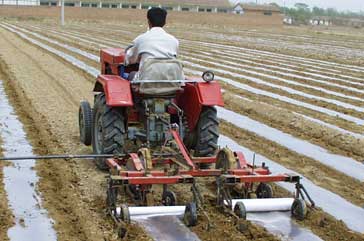Issue 1 Table of Contents

|
FEATURED ARTICLEAgronomy and Soils Evaluation of a Production System in China that Uses Reduced Plant Densities and Retention of Vegetation Branches Hezhong Dong, Zhenhuai Li, Wei Tang, and Dongmei Zhang
Pages: 01-09
Abstract
| Full Text PDF (116K)
Labor-intensive cotton production in China uses plastic mulch, which increases soil temperature and allows earlier planting.
|
|---|
Issue Editors
|
Agronomy and Soils
Evaluation of Strip Tillage on Weed Control, Plant Morphology, and Yield of Glyphosate-Resistant Cotton Pawel J. Wiatrak, David L. Wright, and Jim J. Marois
Pages: 10-14 Abstract
| Full Text PDF (111K)
Engineering and Ginning
The Effect of Harvesting Procedures on Fiber and Yarn Quality of Ultra-Narrow-Row Cotton David D. McAlister III and Clarence D. Rogers
Pages: 15-23 Abstract
| Full Text PDF (128K)
Engineering and Ginning
Microbial Activity of Stored Cotton Bales with Ambient and Moderate Moisture Levels David T.W. Chun, David D. McAlister, and Dean R. Cobb
Pages: 24-29 Abstract
| Full Text PDF (94K)
Engineering and Ginning
New Lint Cleaner to Reduce Fiber Waste W. Stanley Anthony
Pages: 30-40 Abstract
| Full Text PDF (255K)
|
Plant Pathology and Nematology
Relative Host Status of Selected Weeds and Crops for <em>Meloidogyne incognita</em> and <em>Rotylenchulus reniformis</em> Richard F. Davis and Theodore M. Webster
Pages: 41-46 Abstract
| Full Text PDF (124K)
Textile Technology
The Ultraviolet Protection Factor of Naturally-pigmented Cotton Gwendolyn Hustvedt and Patricia Cox Crews
Pages: 47-55 Abstract
| Full Text PDF (187K)
Textile Technology
Cotton Fiber Chemical Differences and Their Effect on Friction Behavior: A Comparison of Two Crop Years in the ATMI/ARS Leading Cultivars Study Gary R. Gamble
Pages: 56-64 Abstract
| Full Text PDF (426K)
|
